RAF Tanker
Handley Page Victor K.2
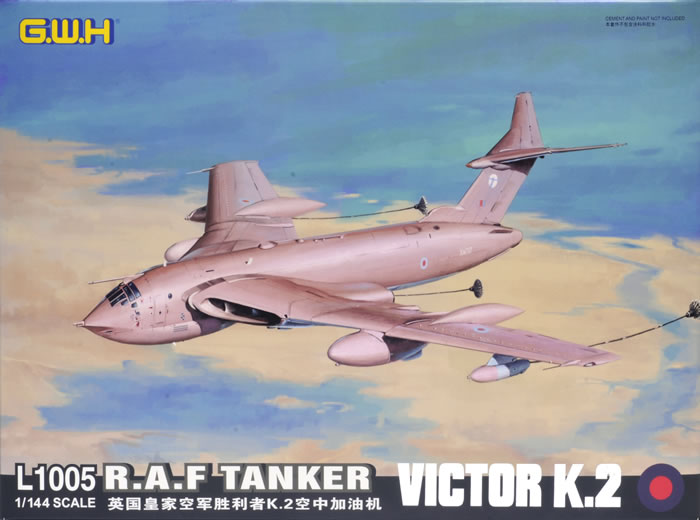
G.W.H., 1/144 scale
S
u m m a r y : |
Description and Item No.: |
G.W.H. Kit No. L1005 - RAF Tanker Victor K.2 |
Contents and Media: |
74 parts in medium grey plastic; two parts in clear plastic; one decal sheet covering two subjects |
Price: |
TBA |
Scale: |
1/144 |
Review Type: |
First Look |
Advantages: |
Fine crisp surface textures including recessed panel lines; nicely detailed; should be a fast easy build; still a decent size in this small scale. |
Disadvantages: |
|
Recommendation: |
In common with their earlier 1/144 scale Vulcan and Victor B.2, this is a lovely model with crisp surface features and a good level of detail. Highly Recommended. |
Reviewed by Brett Green

G.W.H.s 1/144 Victor K.2 will be available online from Squadron.com
The Handley Page Victor was a British jet-powered strategic bomber, developed and produced by the Handley Page Aircraft Company, which served during the Cold War. It was the third and final of the V-bombers operated by the Royal Air Force (RAF), the other two V-bombers being the Avro Vulcan and the Vickers Valiant. The Victor had been developed to perform as part of the United Kingdom’s airborne nuclear deterrent. In 1968, the type was retired from the nuclear mission following the discovery of fatigue cracks, which had been exacerbated by the RAF's adoption of a low-altitude flight profile to avoid interception.

A number of Victors had received modifications to undertake the strategic reconnaissance role, employing a combination of radar, cameras, and other sensors. As the nuclear deterrence mission was given to the Royal Navy's submarine-launched Polaris missiles in 1969, a large V-bomber fleet was deemed surplus to requirements.
Consequently, many of the surviving Victors were converted into aerial refuelling tankers. During the Falklands War, Victor tankers were notably used in the airborne logistics operation to repeatedly refuel Vulcan bombers on their way to and from the Black Buck raids.
The Victor was the last of the V-bombers to be retired, the final aircraft being removed from service on 15 October 1993. In its refuelling role, the type had been replaced by the Vickers VC10 and the Lockheed Tristar. The Avro Vulcan operated in the conventional and nuclear strike roles until 1982, when it was in turn replaced by the significantly smaller Panavia Tornado. *
G.W.H. released their Victor B.2 bomber late in 2014. They have now followed this up with the K.2 tanker version.
G.W.H.'s new 1/144 scale Victor K.2 comprises 74 parts in medium grey plastic, two parts in clear plastic and markings for two aircraft.
Most of the main parts are common between the two kits, but one new sprue offers the parts specific to this tanker version.
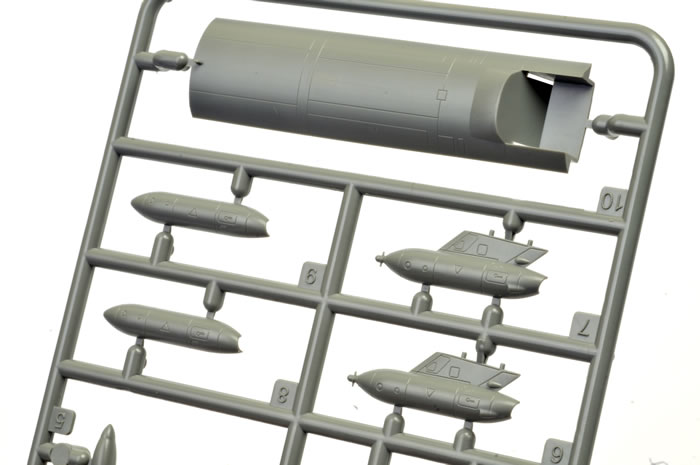
Surface detail is made up from a combination of fine, crisply recessed panel lines and hatches of various sizes. Raised vortex generators are moulded to the tops of the wings. The surface and structural features are really very impressive, with a scale appearance even in this small size.
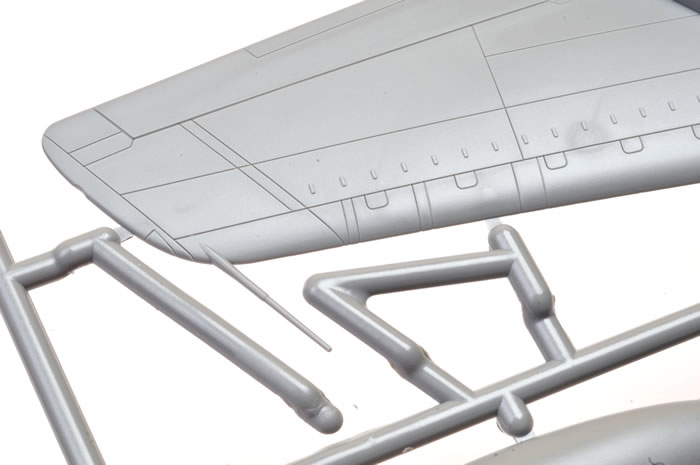
The kit is broken down conventionally into two separate fuselage halves plus separate port and starboard wings in upper and lower halves. The pitot tube is moulded to the upper starboard wing.
The cockpit is a one-piece moulding with centre console and seats. Don't expect to see much of this moulded detail through the framed canopy though!
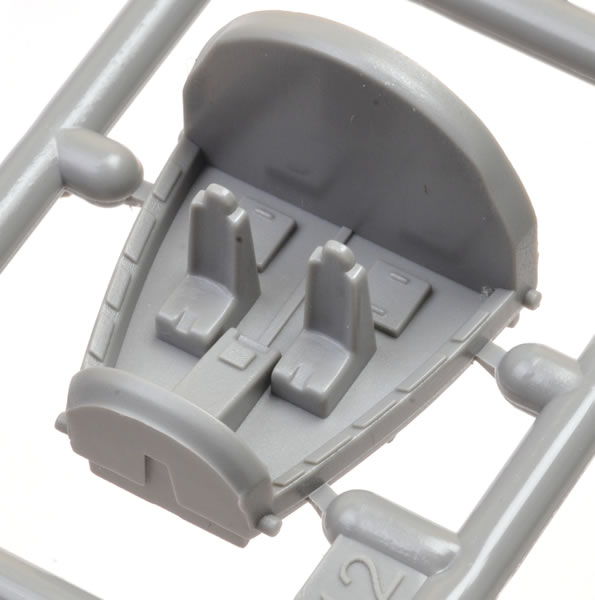
Each of the intakes are presented as pairs in upper and lower halves, with splitters moulded to the lower halves. Small but perfectly formed jet fans are provided for the rear of the intakes. Separate jet pipes are offered for the rear as well.
The large underwing fuel tanks are supplied too.
Speed brakes may be posed open or closed. All other control surfaces are moulded in neutral positions. The bomb bay door is closed, and bomb bay detail is not included.
The main undercarriage is broken down into ten pieces each side, with crisply moulded indivudual wheels.
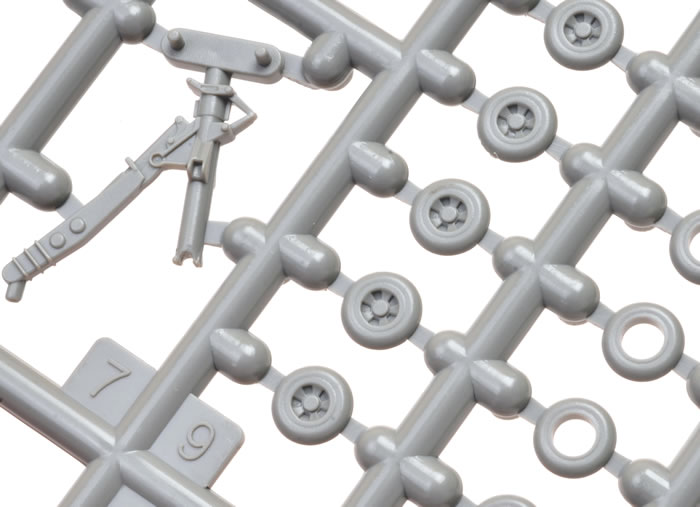
The two clear parts are quite thin and as free from distortion as you could expect in this small scale.
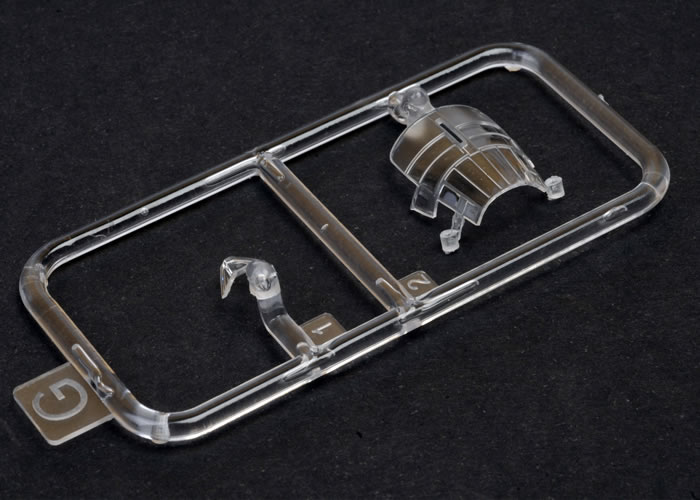
Markings are supplied for two aircraft. One is finished in the tactical scheme of Dark Green and Medium Sea Grey upper surfaces, with Light Aircraft Grey below; while the other is in overall Desert Pink.
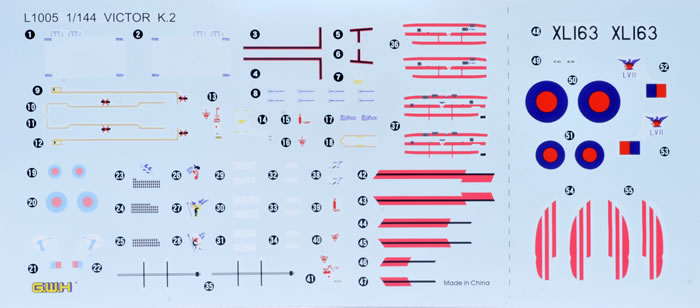
Walkway and stencil decals are included. A colour marking guide to the tactical scheme option is provided on the back of the box.
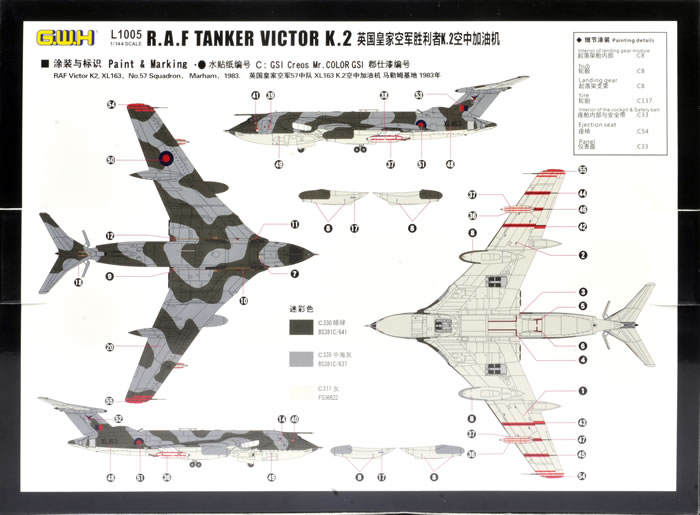
Colours look good and everything is in register.
The tanker version of the Victor was the one I was really looking forward to, and I am sure that I am not alone.
G.W.H. has delivered another high quality product in the niche scale of 1/144.
With an aircraft this large, the size is quite respectable in this scale. Combined with the complex, hard-edged camouflage scheme, this will be quite a scene stealer on your display shelves or at your local model club.
Highly Recommended.
* background information courtesy of Wikipedia.
Thanks to G.W.H. for the sample
Review Text and Images Copyright © 2016 by Brett Green
Page Created 3 February, 2016
Last updated
3 February, 2016
Back to HyperScale Main Page
Back to Reviews Page

|
Home
| What's New |
Features |
Gallery |
Reviews |
Reference |
Forum |
Search